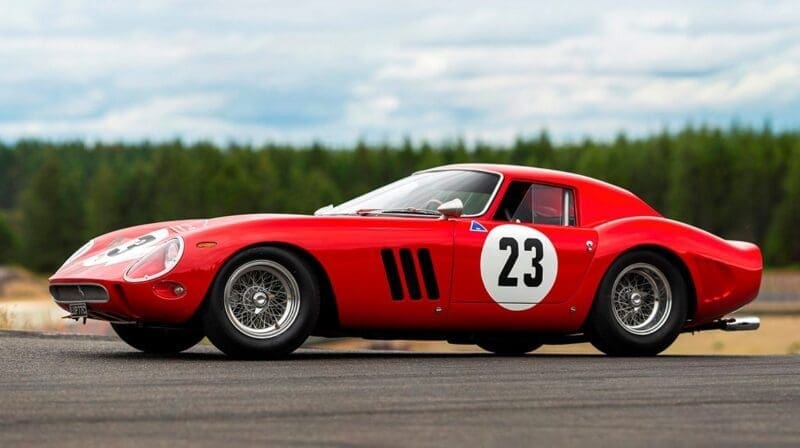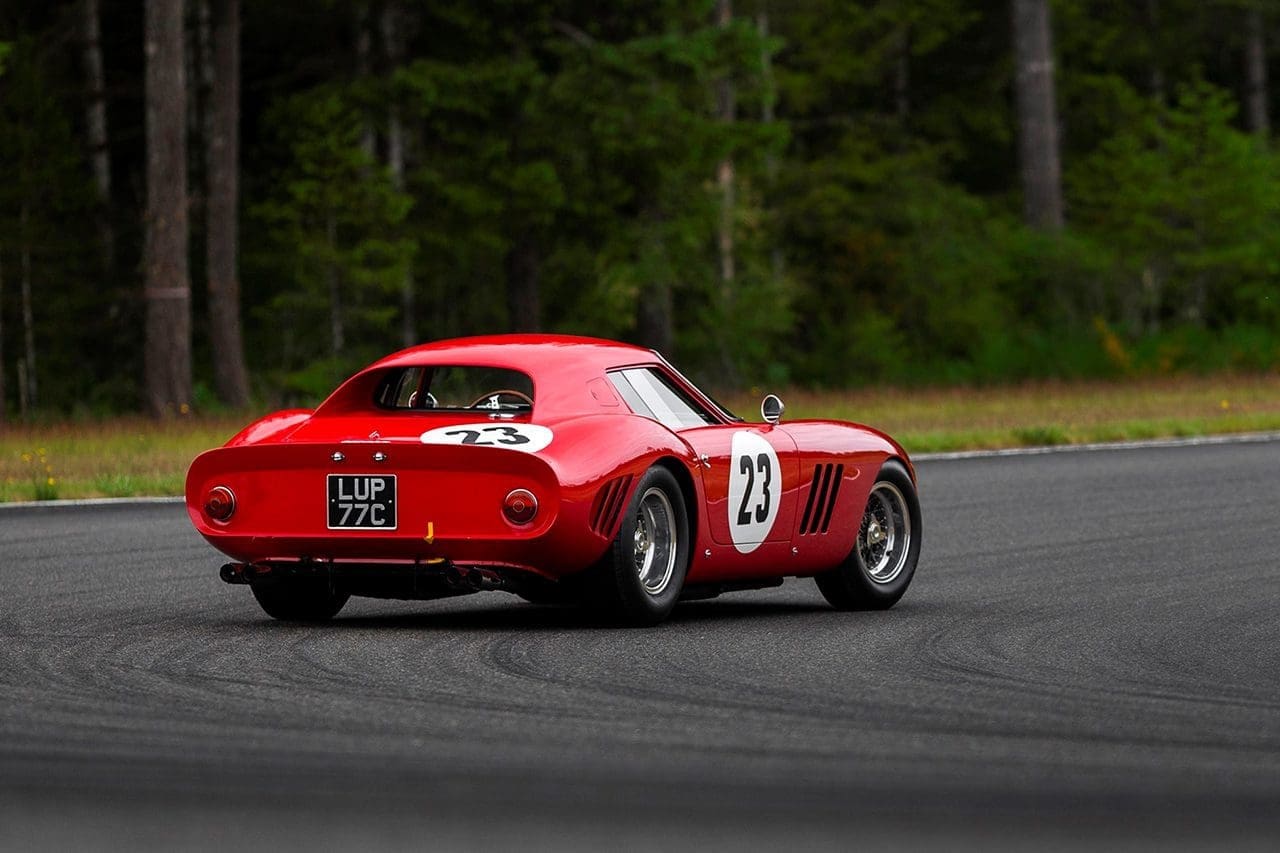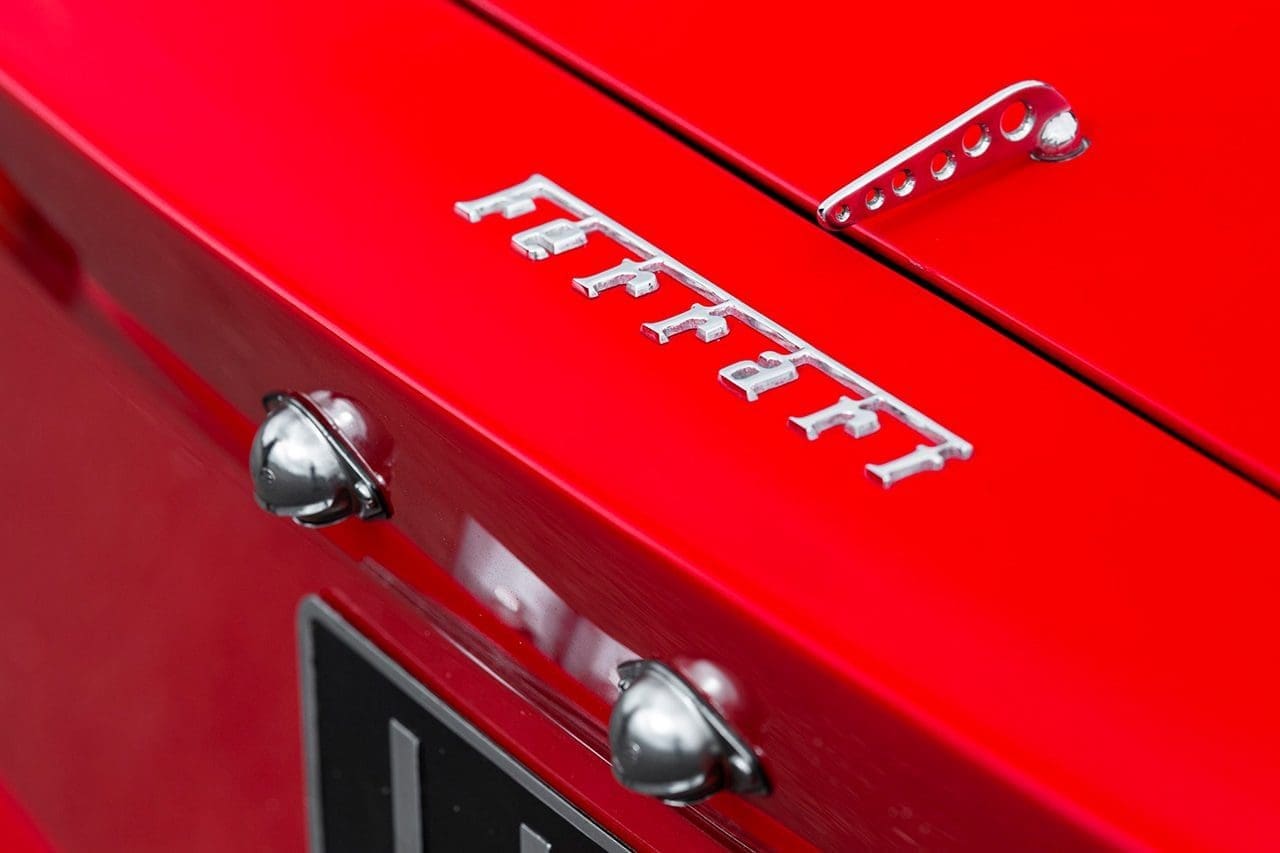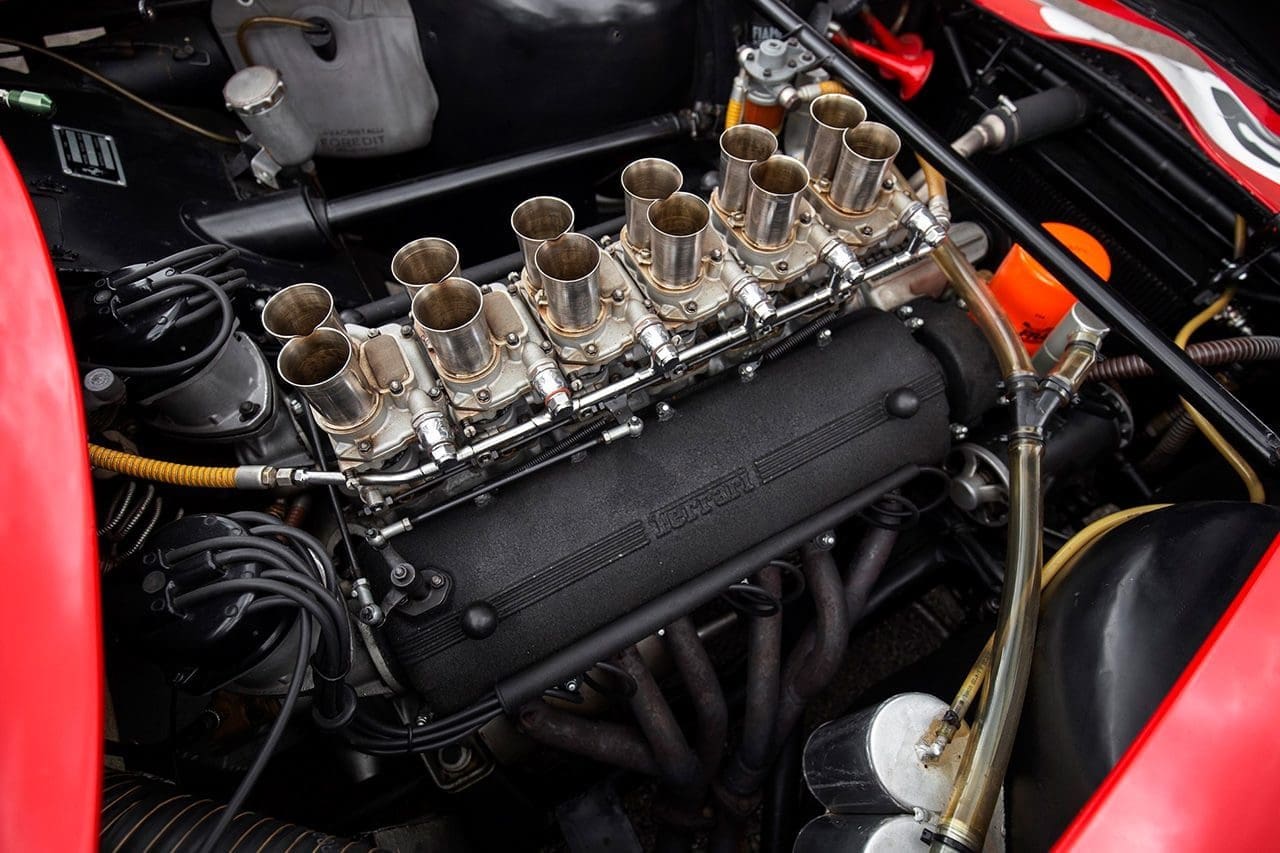RM Sotheby’s celebrated a historic weekend in Monterey (August 24 and 25) by selling a 1962 Ferrari 250 GTO, chassis number 3413 by Scaglietti for $48,405,000; a new world record for the most valuable car ever sold at an auction.
Claiming rarity, a long pedigree of mechanical development, beautifully sculpted coachwork, and an overwhelmingly successful competition record, the Ferrari 250 GTO has justifiably evolved into the world’s most desirable collector car. The rarity with which the model is publicly offered for sale confirms its desirability. The 250 GTO chassis 3413 was the first to be offered for public auction in over 18 years. At any given point in time, 36 or fewer collectors can claim to be GTO owners, making them part of an ultra-exclusive members-only club with virtually immediate access to the world’s most important automotive events.
Even in such rarefied atmosphere, the 250 GTO chassis 3413 is quite exceptional. It was just the third production GTO ever built, completing factory assembly in late April 1962. It was the first GTO example to feature Series I coachwork details such as a small radiator intake, narrow brake ducts, hood fasteners, and sail-panel vents. Scaglietti’s coachwork also featured a bolted-on rear spoiler and turn signal lamps below the headlights. Fitted with a tipo 168/62 competizione V-12, the GTO was finished in Rosso-cina, and the interior was trimmed with traditional blue cloth upholstery.
In the first week of May, the Ferrari was driven by the legendary Phil Hill as Ferrari’s official practice car for the upcoming Targa Florio. A few days later, the GTO was sold to the famed Italian privateer Edoardo Lualdi-Gabardi, one of the most charismatic and successful privateer drivers of the era and a personal friend of Enzo Ferrari who very consistently received the finest, special cars from the factory. By the time a crash in 1972 forced him to retire from racing permanently, he had triumphed (or earned class wins) in no fewer than 116 races, a remarkable feat by any measure.
Lualdi-Gabardi campaigned the 3413 with great success in Italian hill climbs, starting with a victory at the Coppa Citta Asiago on 13 May. This was followed by a slew of class wins during the next month at hill climbs at Bologna-Raticosa, the Coppa Consuma, Bolzano-Mendola, and Trento-Bondone. The GTO then achieved several outright victories, starting with the Trieste–Opicina hill climb on 22 July, followed by the Trofeo Sarezzo-Lumezzane and the Coppa Faglioli in September, and the Coppa Autunno at Monza in October. Lualdi-Gabardi experienced such success in 3413 that at the season’s conclusion, he was declared the class champion for the 1962 Italian GT Championship.
In early April 1963 the GTO experienced a final overall victory with Lualdi-Gabardi at the Stallavena-Bosco Chiesanuova hill climb, and four days later the car was sold to its second owner, Gianni Bulgari, the scion and eventual president of the Bulgari watch company. Gianni first entered the Ferrari at the Targa Florio on 5 May, during the third round of the 1963 International Championship for GT Manufacturers, and achieved immediate success finishing 1st in class, 4th overall, with Maurizio Grana as his co-pilot. Six months later he won the Coppa FISA at Monza.
These feats of success that 3413 achieved in merely its first calendar year is truly remarkable, especially when one considers that all these successes transpired before the 3413 was driven to class victory at the Targa Florio by Taramazzo and Ferlaino in its second year.
To put this victory into context, consider that the drivers had to complete ten laps of a 72-km road course in about 7 hours with challenges such as elevation changes, blind corners, switchbacks, and of course, the danger of thousands of spectators standing mere inches from the road. Only 28 cars finished the race that year, while over 30 failed to cross the finish line, due to accidents or mechanical failures.
Prior to this victory, Ferlaino had commissioned the upgraded GTO/64 coachwork. Ferlaino raced the 250 at least three more times in 1964, earning a class win at the Bologna-Raticosa Hill Climb in late May and 3rd overall at the Mugello 500 KM a month later.
Shortly thereafter, 3413 was acquired by Dan Margulies, a dealer residing in London. At some point prior to December 1965, the front coachwork around the nose was slightly modified, with twin vertical vents for brake cooling added in place of the prior rectangular driving lights. In late December 1965, the car was entrusted to Maranello Concessionaires driver David Piper for the Redex Trophy at Brands Hatch where he claimed an outright victory, fittingly in 3413’s final period race.
These feats of victory speak not only to the talents of the drivers behind the wheel but also to the world-class engineering at Ferrari that placed the GTO miles ahead of its competition on the track. These were indeed the years in which the indelible image of a V-12 front-engined sports car, liveried in racing red with an iconic prancing horse became the international symbol of Ferrari’s racing dominance.
















